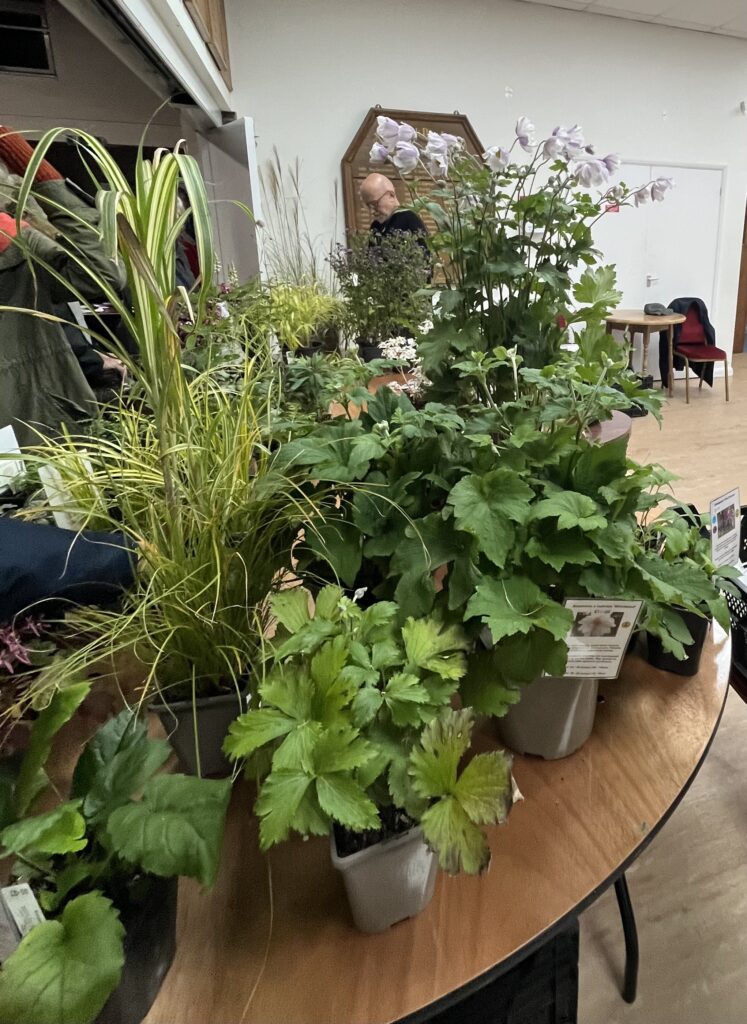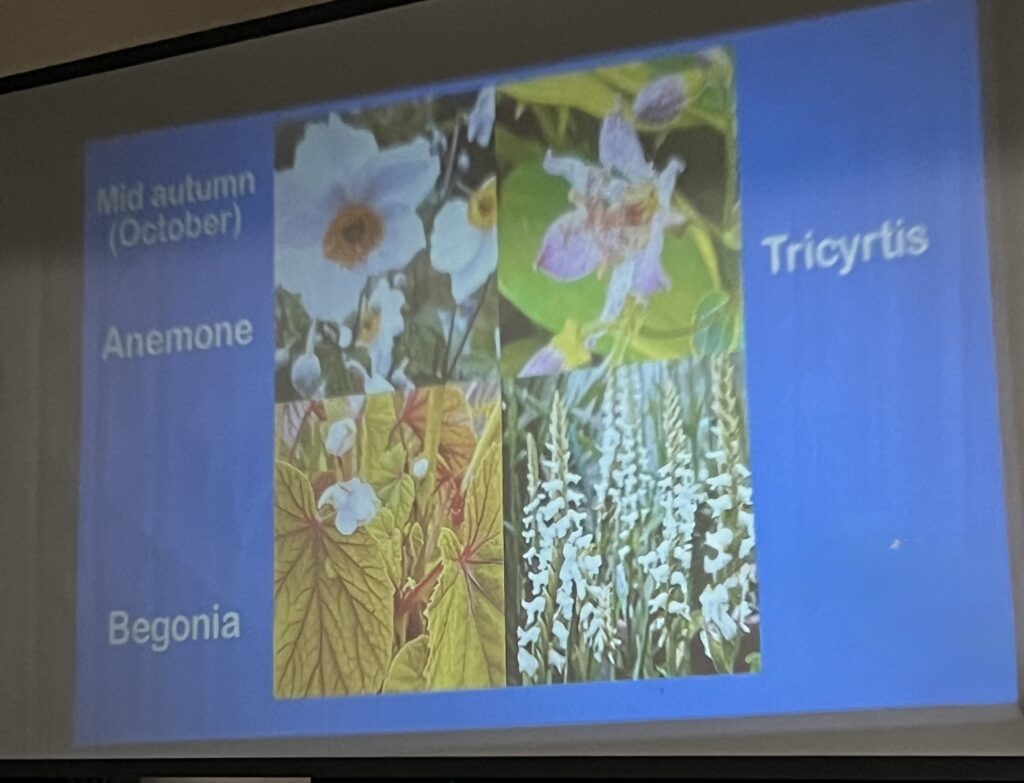While the soil is still warm October is a good month to put your plants into well-prepared ground. They will settle in quickly, and put on lots of roots growth before winter sets in. October’s weather is a mixed bag and as days become shorter, cooler nights bring the possibility of frost, so make sure that vulnerable plants are protected.
Fruit and vegetables
Pumpkins: support them on bricks or tiles so the sun can ripen them, improving their colour before you carve them on the 31st, or you can store for the winter. They will keep up to 6 months in a cool, dark place, at a temperature range of 10-16 degC. Store them in a single layer.
Sow broad beans: “Aquadulce” and “Meteor” are good for overwintering and a spring harvest. Sow them directly in the ground.
Plant autumn onions: choose autumn-planting variety such as “Radar” or “Electric”. Plant the sets into well-prepared, fertile soil. Onions need a lot of moisture. You shouldn’t have to water in winter but in spring and summer provide extra moisture if necessary.
Plant garlic: garlic is best planted in free-draining soil in late autumn or early winter, as the cloves need a period of cold weather to develop into bulbs. To protect the emerging bulbs from birds, lay netting over new plants.
Rhubarb: new crowns can be planted now and established clumps can be divided. Remember, splitting your rhubarb plants is essential for a lush harvest year after year.
Bare-root fruit trees: October/November is the ideal time to plant fruit trees. Choosing where to plant your tree and good soil preparation are vital. Choose a site in full sun with enough room for the branches to grow and develop over time.
Improving soil: add mulches, garden compost, spent pot compost and manure to bare soil patches. Soil preparation is vital when growing vegetables. The best time is in autumn for heavy soils and spring for light sandy soils. Digging well-rotted organic matter or manure into clay soil will improve the structure and make it easier to work.
Green-manure can also be used to cover bare patches between crops. An over-wintering green manure mixture sown in the autumn will help to smoother weeds and prevent soil erosion from winter rain. It will be ready to be dug up in spring releasing nutrients and improving the soil structure.
Flowers
Hardy annuals: October is your last chance to sow hardy annuals direct into the soil. They’ll survive over winter and get a head start in spring.
Dahlias: with little care and attention dahlias will keep flowering for several weeks. Deadheading, keeping plants well staked and clearing up any fallen leaves and debris.
Spring-flowering bulbs: October is the best times to plant daffodil, crocus and iris bulbs, tulips can wait until November.
Bare-root shrubs, rose and peonies: plant them this month and enjoy their bloom in spring.
Herbaceous perennials: herbaceous perennials can become less productive over time and it’s best to divide the plants every 3 to 5 years. October is a good time to divide and move plants around or to share them with friends.
- Lift the plant carefully digging around the rootball.
- Divide the clump using your hands or garden tools to break it apart and to obtain smaller sections with their own root system.
- Replant the new sections in holes enriched with well-rotted compost.
- Backfill, firm and water well
Mulch borders: as perennials die back cover any bare soil with a thick layer of mulch (about 5 cm deep). Leave gaps around woody plants to stop the mulch coming into contact with stems and causing rot.
Mulching will prevent erosion, protecting the soil from heavy winter rain. It will also help to suppress weeds and as it gradually breaks down, it will feed the soil and improve its structure.
Mulch could be anything from summer containers spent compost, well-rotted bark, homemade leaf mould or compost. If using spent compost from summer containers, check for vine weevil grubs before spreading on soil.
Alpines and succulents: alpines and some succulents will cope with winter temperatures, but they will suffer if their roots stay too damp for to long.
- Place a cloche over pots or a sheet of glass or perspex over pans, sink or troughs.
- Remove pot saucers and trays and raise the pot to allow water to drain away freely.
- In good weather remove the protection to wipe away any build up of condensation.
Make leaf mould. Leaf mould is produced naturally in woods and forests. It differs from conventional composting by the way it is decomposed. Composting uses bacteria to break down leaves while leaf mould uses fungi. It is also a very slow process that will take a minimum of 1 year to 2 or even 3 years depending on the type of leaves. It is an invaluable soil conditionner. Well-rotted (over 2 years old) it can be used as seed-sowing compost. Leaf mould that is less than 2 years old can be used as mulch and soil improver.
So start now and welcome autumn leaves as a gift to your garden, turning them into “black gold”.
- Collect leaves.
- Place the leaves into a bin liner (preferably black), moisten them if they are dry.
- Pierce holes in the bag.
- Tie the top loosely and stack the bags out of sight for up to 2 years.
You can also build a storage pen from chicken wire supported at the corner with stakes. Make you leaf heap as large as possible to hasten decay and sprinkle with water in dry spells.
Don’t forget
- Tidy your pond: Autumn is a good time to get your pond in order and improve oxygen levels to help plants and wildlife. Tidy plants, thin out growth and put netting over the surface to prevent leaves from falling into the water.
- Return houseplants inside preparing them for winter: tidy them up removing yellowing foliage, check for pests and ease back on watering and stop feeding.
- Raise up pots: as the weather becomes damp and showery, raise potted plants off the ground to prevent them sitting in water.
- Move pelargoniums and geraniums: place them in a sheltered spot.
- Check tree stakes and ties: to help trees stand up to winter storms. Make sure that stakes and ties are secure and that the ties have not become too tight over the years.
- Organise your equipment: roll ups, drain, clean and store hoses and other equipment over winter to prolong their life.
- Watch out for wildlife: leave windfall fruits for birds and other wildlife. Leave ivy as a useful late source of nectar for pollinators.
- Halloween on Friday 31st October: don’t forget to carve your pumpkin, enjoy squash soup and pumpkin pies, and a hare a glass of mulled wine with friends.



